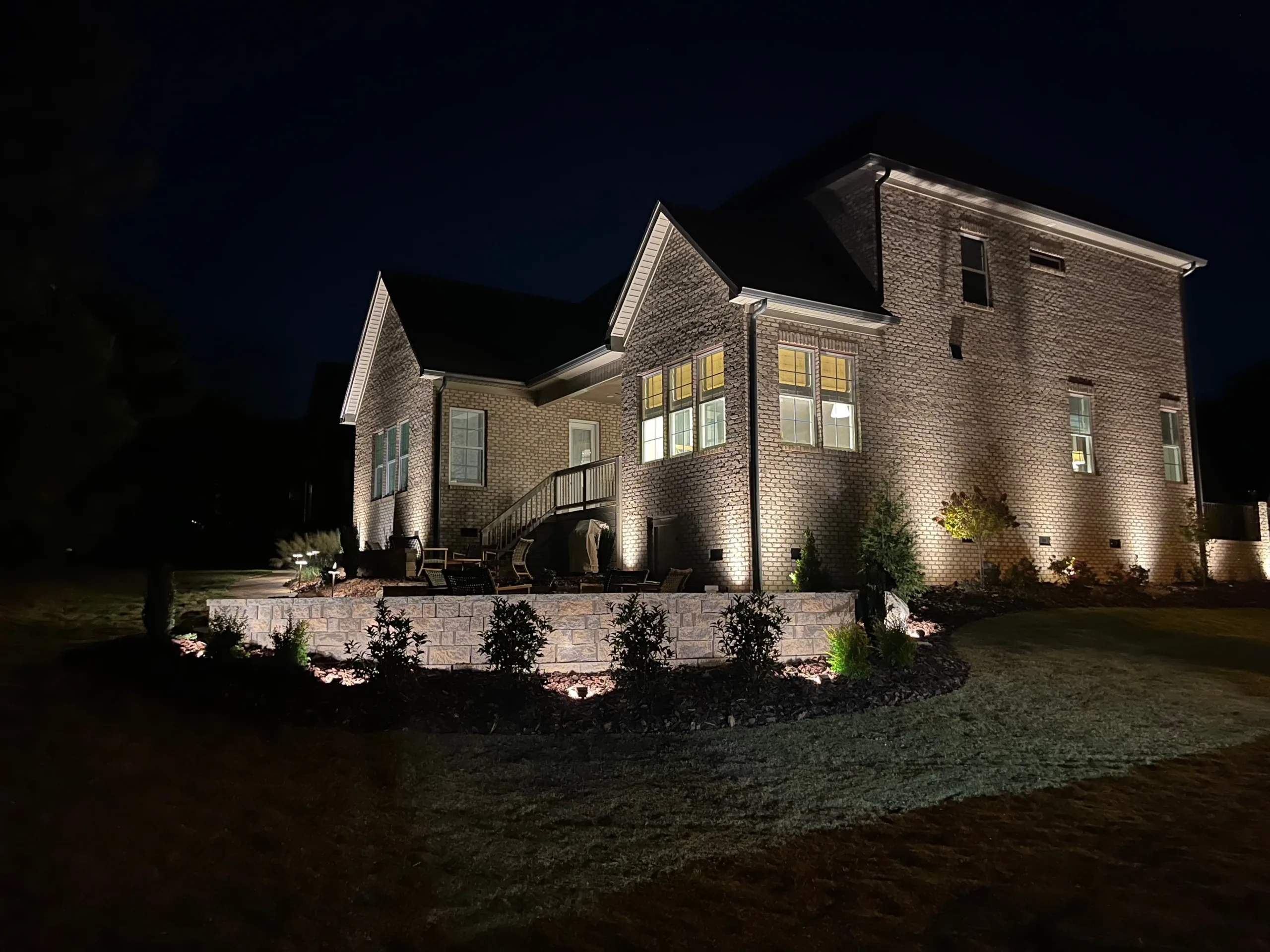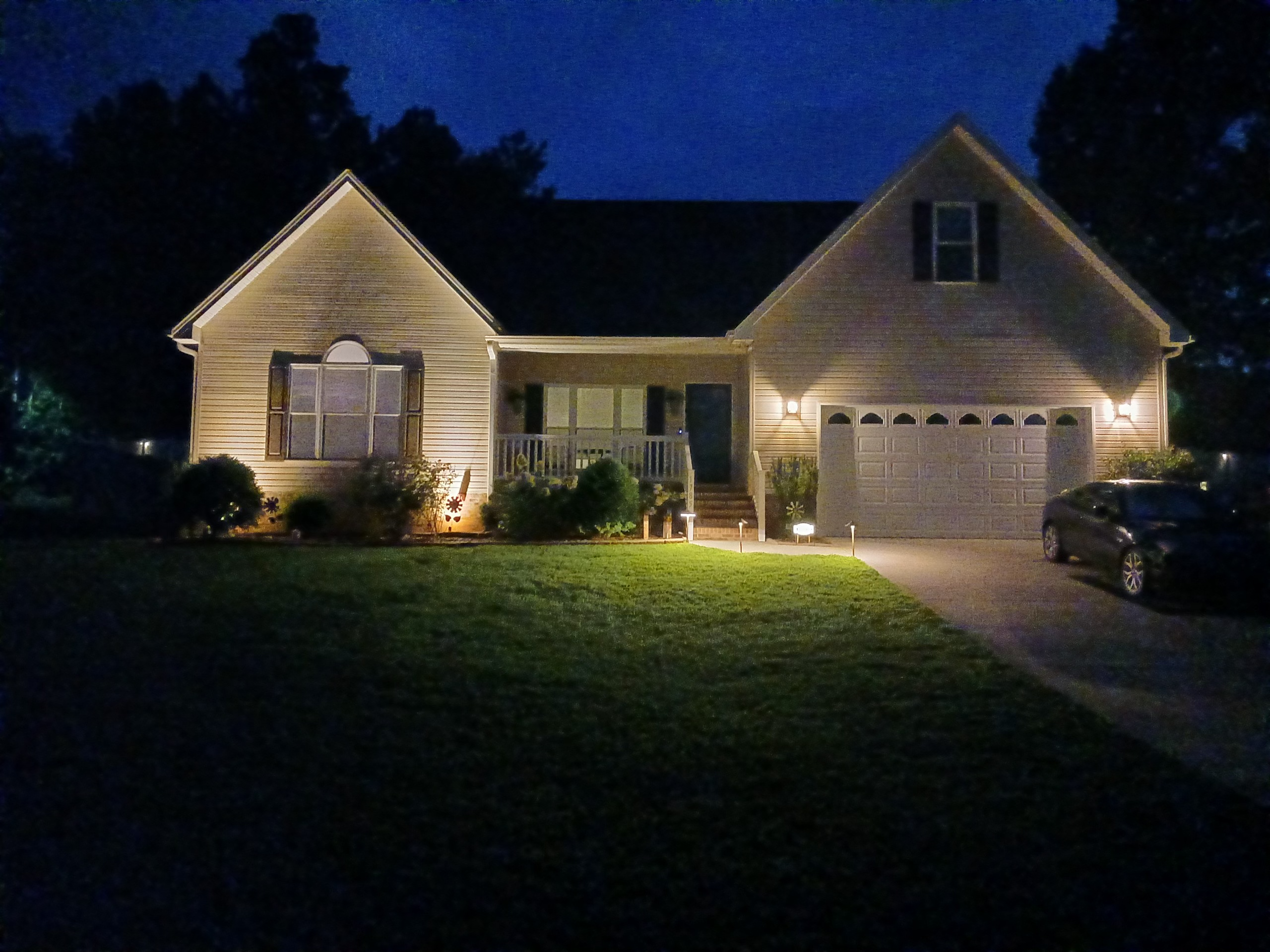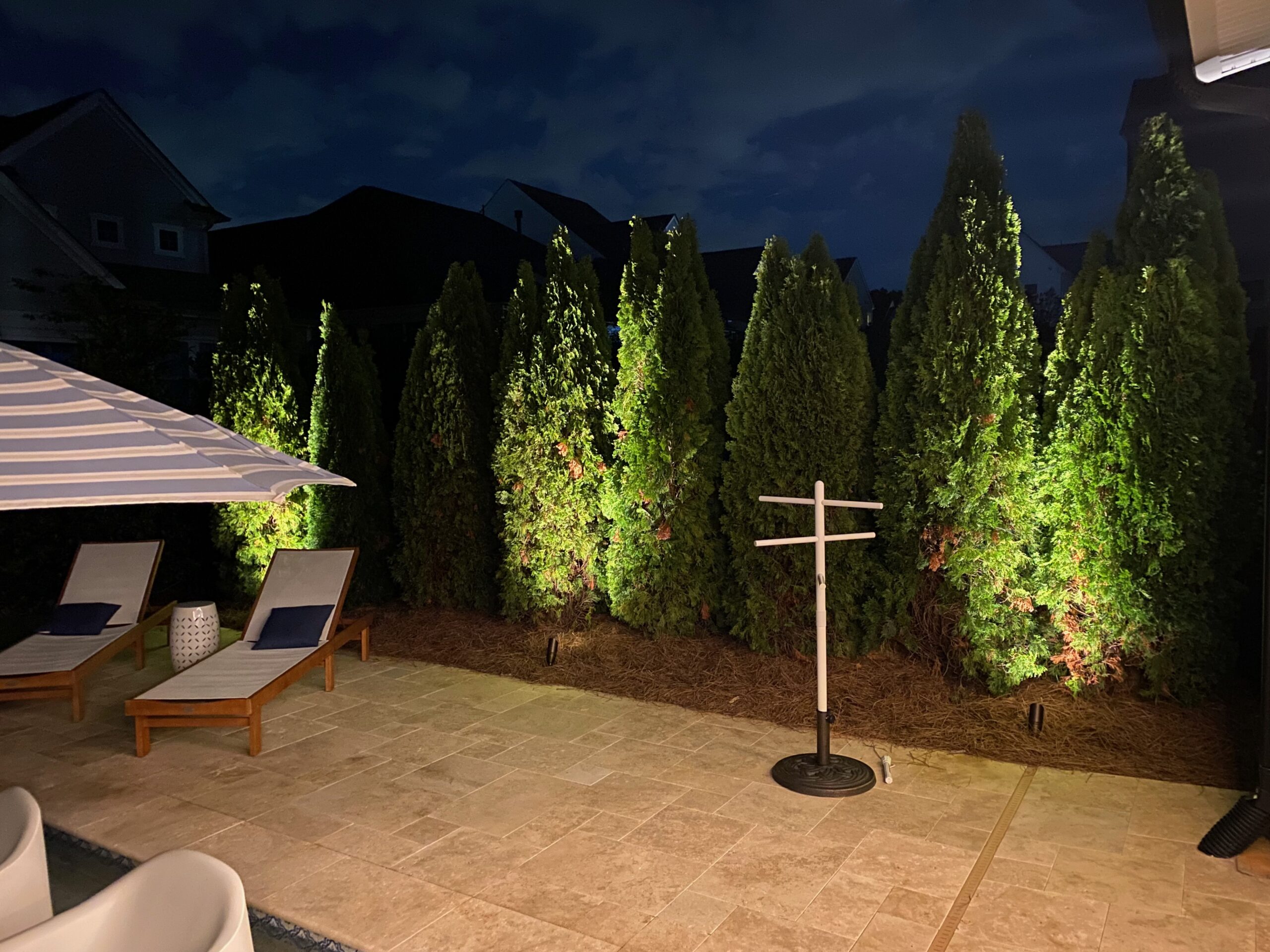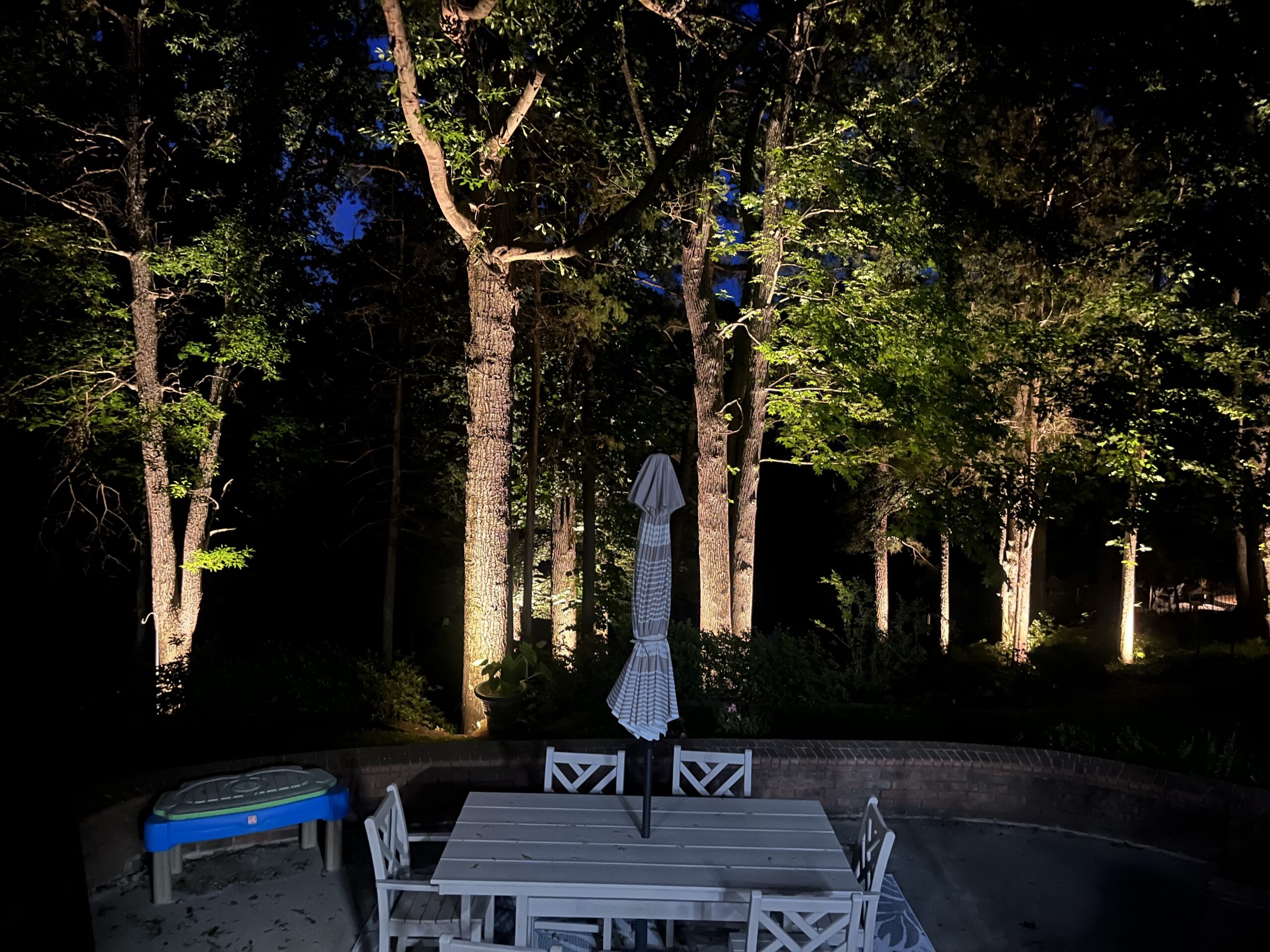When it comes to outdoor lighting, most homeowners focus on the glow and brilliance of light itself, but the true magic lies in the shadows. Shadows, when thoughtfully incorporated into outdoor lighting design, can transform a simple backyard into an atmospheric and visually captivating space. The play of light and shadow creates depth, texture, and drama, adding an artistic dimension to your outdoor environment.
How Does Shadow Play Enhance Outdoor Lighting Design?
Shadows can be incredibly powerful tools in outdoor lighting, adding contrast and mystery to an otherwise ordinary space. When used correctly, shadows create depth and dimension, transforming your backyard or garden into an enchanting and dynamic environment. Here’s how shadow play enhances outdoor lighting design:
1. Adds Drama and Intrigue
Shadows can introduce a sense of mystery to your outdoor space. When you position lights strategically, shadows cast by trees, sculptures, fences, or architectural features can transform your yard into something truly dramatic. A well-crafted shadow can make an otherwise static feature feel alive and dynamic, even after the sun has set.
- Example: A tall tree with up-lighting can cast dramatic, long shadows across a lawn, creating a visually stunning and mysterious effect.
2. Defines Space and Architecture
Shadows can define the architectural lines of your space, adding structure and interest. By highlighting vertical and horizontal elements with shadows, you can emphasize the design of your home, garden, or other outdoor features.
- Example: Shadows from garden trellises or pergolas can give an otherwise flat space a sense of texture, making the design feel more three-dimensional and alive.
3. Enhances the Sense of Scale
Properly positioned shadows can create a sense of scale, making small spaces feel more expansive or large spaces feel more intimate. The way light interacts with surfaces and features determines how we perceive space. Shadows can also serve to visually guide the viewer’s eye, leading them toward key focal points in your outdoor design.
- Example: Shadow patterns along a pathway can gently guide visitors toward the entrance of your home or a secluded garden area.
4. Highlights Texture and Detail
Shadows bring out the texture and details of materials like stone, wood, and foliage. By casting shadows across rough surfaces, the lighting can create visual contrast that makes every detail stand out. Whether it’s the bark of a tree, the grooves in a stone wall, or the leaves of a plant, shadows can emphasize these elements and draw attention to the beauty of natural materials.
- Example: Placing a light at the base of a textured stone wall will cast shadows that enhance the rough surfaces, giving the space a unique, textured look.
What Are The Key Principles For Creating Effective Shadow Patterns In Outdoor Spaces?
Creating effective shadow patterns in your outdoor space requires understanding the relationship between light and the objects it interacts with. To achieve visually pleasing and purposeful shadows, consider these key principles when designing your outdoor lighting:
1. Consider the Source of Light
The angle and intensity of the light source play a critical role in how shadows will appear. The higher the light source, the shorter and sharper the shadows will be. Conversely, lower light sources will create longer, softer shadows. Understanding how light behaves is essential to creating the right type of shadow for your space.
- Tip: For dramatic, short shadows, position the light at a higher angle. For softer, elongated shadows, place the light closer to the ground.
2. Shape and Position of Objects
The shape and position of objects in your outdoor space will directly influence the shadows they cast. Tall objects like trees or sculptures can cast long, sweeping shadows, while smaller, more intricate objects may produce more delicate, fragmented shadows. Think about the features you want to highlight and position your lights accordingly.
- Tip: Objects with complex shapes—like an ornamental tree or wrought iron fence—will cast more intricate shadows, which can be used to add visual interest to your space.
3. Balance of Light and Shadow
Balance is the key to creating harmonious shadow patterns. Too much light can overwhelm the space and erase the shadows altogether, while too little light can make the space feel dark and uninviting. Finding the right balance will allow you to showcase the shadows while ensuring the space is adequately lit.
- Tip: Use a combination of up-lighting, down-lighting, and side-lighting to create varied shadows that work together to complement the overall design of your space.
4. Layering Light and Shadow
Layering your lighting design—using a mix of both ambient and accent lighting—will give you more control over the shadows in your outdoor space. This technique helps create dimension and depth, making the shadows more dynamic and engaging. Accent lighting, such as spotlights or path lights, can highlight specific features, while softer ambient lighting can fill in the spaces between, preventing overly harsh contrasts.
- Tip: Mix lighting sources at different intensities and angles to create complex and intriguing shadow patterns.
How Can I Balance Light And Shadow To Create A Visually Appealing Outdoor Environment?
Striking the right balance between light and shadow is crucial to achieving a visually appealing outdoor environment. A carefully planned lighting design should emphasize the right elements while still maintaining a sense of harmony. Here are some tips on how to balance light and shadow effectively:
1. Use Shadow to Frame Features
Shadows can help frame key features in your outdoor space, such as architectural details, sculptures, or plants. By placing lights at strategic angles, you can create shadows that highlight these elements while also making the space feel larger and more open. This creates a sense of flow and allows the shadows to work in harmony with the lighting.
- Example: Position a light source behind a sculpture to cast long shadows on the ground, drawing attention to the artwork while still maintaining the mystery of the surrounding space.
2. Incorporate Ambient Lighting
Ambient lighting provides general illumination for an outdoor space and helps fill in the gaps between shadows. While accent lighting highlights specific objects, ambient lighting ensures that the entire space is gently illuminated, preventing areas from feeling too dark or isolated.
- Tip: Use softer, diffused lighting for ambient light, such as wall-mounted sconces or hidden fixtures, to reduce the harshness of the shadows.
3. Experiment with Layered Lighting
By layering different lighting sources, you can achieve a dynamic interplay between light and shadow that adds intrigue to the space. For example, you might use up-lighting to cast dramatic shadows against a wall while placing softer lighting on the ground to fill in the spaces between. This layered effect creates visual interest and prevents the space from feeling too flat or monotonous.
- Tip: Use several light sources at varying heights to create a complex pattern of shadows that play off one another.
4. Consider the Natural Flow of the Space
The natural flow of your outdoor space can help guide where the light and shadow balance should fall. Pathways, seating areas, and plant beds all have different functions and should be lit accordingly. For instance, you may want to create gentle shadows along a pathway to guide visitors, while a seating area may require softer lighting to create a more intimate atmosphere.
- Tip: Consider the function of the space when determining the placement of both light and shadow, ensuring that the shadows don’t overpower the purpose of the area.
What Are Some Common Mistakes To Avoid When Using Shadows In Outdoor Lighting Design?
While shadows can be a beautiful addition to your outdoor lighting design, it’s easy to make mistakes that can detract from their effectiveness. Here are some common pitfalls to avoid when incorporating shadows into your lighting plan:
1. Overly Harsh Shadows
While shadows can add drama, overly harsh shadows can make your outdoor space feel stark and unwelcoming. This often happens when lights are too intense or positioned incorrectly. Aim for a balanced, softened effect by using dimmers or indirect lighting to create shadows that enhance, rather than overwhelm, the space.
- Tip: Avoid using overly bright floodlights for general lighting. Instead, use fixtures with lower wattage or softer light to ensure the shadows are gentle and inviting.
2. Under-lighting Key Features
On the flip side, under-lighting key features can cause your shadows to become too subtle, diminishing their impact. If you’re trying to highlight a particular feature, ensure the light source is strong enough to create shadows without overpowering the space.
- Tip: Be mindful of the placement and intensity of light sources, especially when spotlighting important architectural or landscape elements.
3. Inconsistent Shadow Placement
One of the most significant mistakes when using shadows in outdoor lighting is inconsistency. If shadows are not aligned or placed thoughtfully, they can make the space look disorganized and chaotic. Make sure to plan your light placement so that shadows flow together and complement one another, rather than competing for attention.
- Tip: When designing your lighting, carefully consider the size, shape, and angle of shadows. Use a consistent light source angle for a more uniform effect.
4. Not Considering Seasonal Changes
As the seasons change, the angle of the sun shifts, affecting how shadows will appear at different times of year. If you rely too heavily on sunlight to create shadows during the day, you may find that the effect is different once the seasons change. Consider how your lighting will perform throughout the year and adjust your design accordingly.
- Tip: Use a mix of lighting sources to create consistent shadows year-round, rather than relying solely on natural light.
Shadows are not just an afterthought in outdoor lighting—they’re an essential tool that can enhance the visual depth, drama, and ambiance of your space. By understanding how to play with light and shadow, applying key principles of design, and avoiding common mistakes, you can create a visually stunning outdoor environment that captures the beauty of both light and darkness. Whether you’re looking to add mystery, define space, or highlight architectural features, the art of shadow play is a powerful tool for transforming your outdoor space into a work of art.
Illuminate Your Outdoors with Palmetto Outdoor Lighting: Affordable, Custom Solutions
At Palmetto Outdoor Lighting, we specialize in creating stunning outdoor lighting designs that showcase your property’s beauty while enhancing its ambiance. Whether you want to emphasize architectural features, create dramatic shadow effects, or simply add some light to your pathways, our expert team is here to bring your vision to life. We offer a range of services to suit different budgets and needs, ensuring that your outdoor space looks breathtaking both day and night.
- Basic Lighting Package
Perfect for illuminating entryways, walkways, and highlighting a few key landscape features, this package offers ambient lighting to enhance your curb appeal and provide a warm, welcoming glow for your home. - Premium Feature Package
This package includes a blend of accent lighting for trees, garden sculptures, and your home’s exterior, along with pathway lights to enhance the look and functionality of your outdoor space. Ideal for homeowners who want to make a statement with their outdoor lighting. - Custom Lighting Design
For a fully tailored, unique lighting design, this package offers a custom approach to every aspect of your outdoor space, from lighting your garden’s architecture to creating beautiful, intricate shadow play. This premium service includes a consultation, expert design, and professional installation, ensuring your vision is realized in its fullest potential.
Why Choose Palmetto Outdoor Lighting?
- Expert Design & Installation: Our team of skilled designers will craft a lighting plan that brings out the best in your space. We handle every detail, from concept to installation.
- High-Quality Fixtures: We use only the best, most durable lighting fixtures that will stand the test of time, rain, and shine.
- Energy Efficiency: Our eco-friendly solutions, including LED and solar-powered options, reduce your carbon footprint while lowering energy costs.
Ready to Transform Your Outdoor Space?
Let Palmetto Outdoor Lighting help you illuminate your home with expert design and installation. Whether you’re looking to create dramatic shadows or enhance your outdoor space’s beauty, we offer the perfect lighting solution to fit your needs. Contact us today for a free consultation and take the first step toward transforming your outdoor environment into a work of art.





